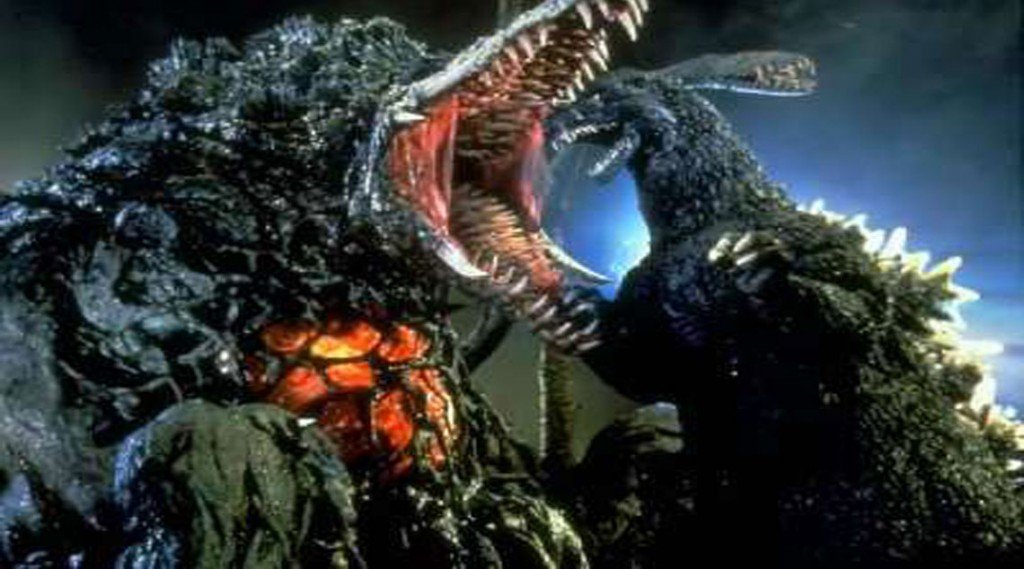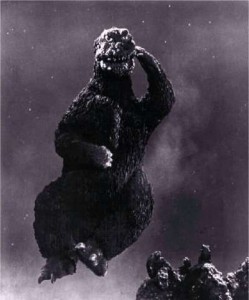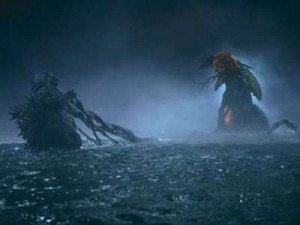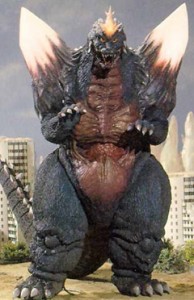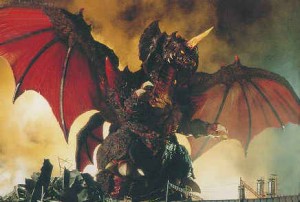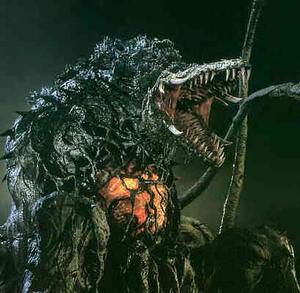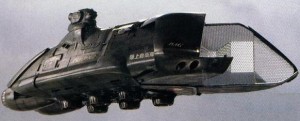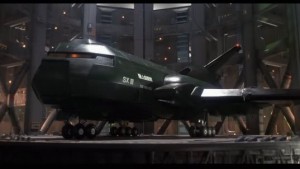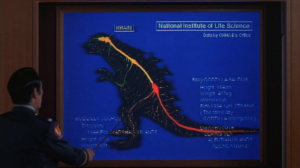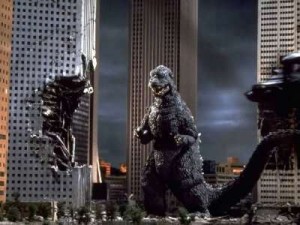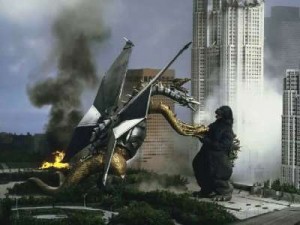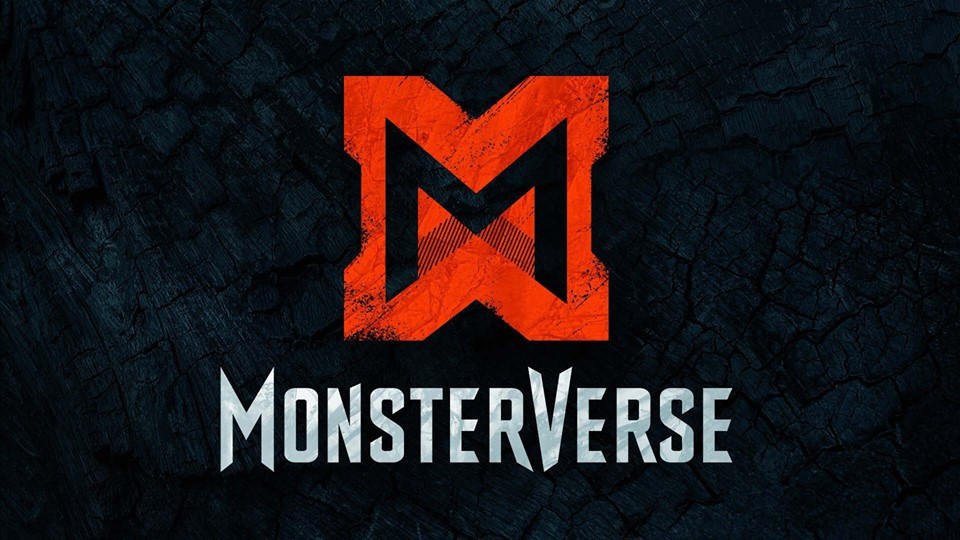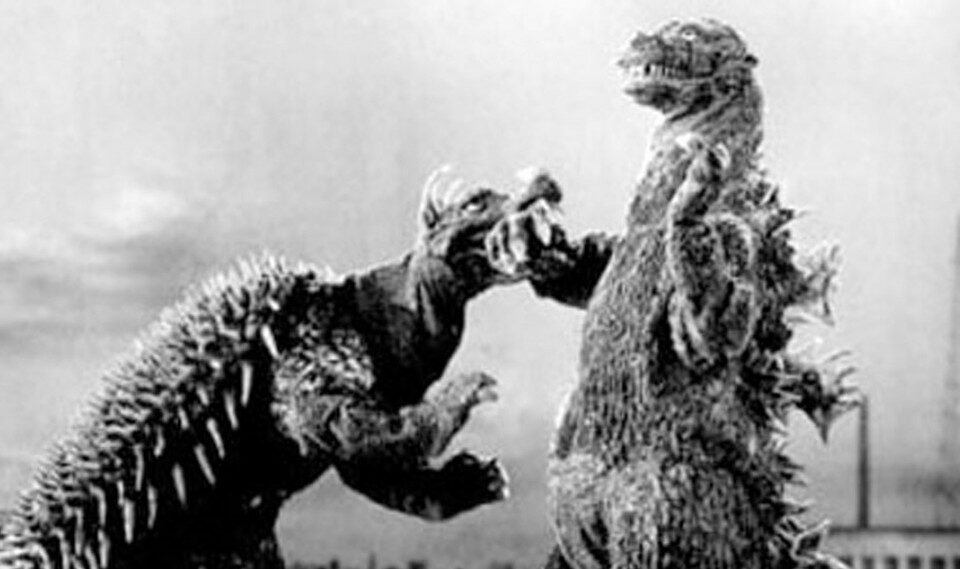DKN Podcast – Episode 73: Dogora
January 24, 2015You Choose the next TokuZone!
February 5, 2015I have discussed this issue on the podcast before, but feel the need to write it down in the hopes of having something more on the record and to have the ability to go into depth more about this era of Godzilla films–an era that I find to be, as the title of this article states, overlooked and unappreciated.
Before I continue, I want to give a note that this article is that of my own opinion and experiences. My experiences have shown me that this era is glossed over, or simply neglected, in many discussions within the fandom. Or, worse yet, looked upon as being inferior to the Showa and Millennium era of films. This article’s intent is not to say this era is better than the other two, but to, hopefully, bring about more discussions on the importance of this era of Godzilla films and to garner greater appreciation for the strides it made from when the Showa era ended in 1975. Many of the new techniques used in the Heisei era paved the way for the 1990s Gamera films and for the Millennium era that followed four years after the conclusion of the Heisei era.
Showa & Millennium Reign Supreme
There’s no doubt that the Showa era of Godzilla films is the most discussed and liked within the Godzilla fandom. Not only are there more movies made during this era (1954-1975), but many of the U.S. fans that have led the way to the explosion of kaiju popularity stateside grew up watching these films on television, in drive-ins, and the theaters. This was their first exposure and the films hold a special place for them.
Yours truly also has the Showa era as his favorite of the three. Like many of the older fans, my first exposure was to the Showa Godzilla films.
The Millennium era (1999-2004) is popular, so to speak, for the reasons that it helped usher in younger fans and because it’s the latest era in Godzilla films. Many fans do enjoy most of the movies in this era as well. I see a lot of discussion involving GMK and Masaki Tezuka’s Kiryu/Mechagodzilla pair of movies. I have fond memories when GMK was released. Many fans were boldly declaring that the film, quite possibly, could be the best Godzilla film ever made. While such discussions on that film’s place in the franchise have quieted down in recent years, there’s no doubt that GMK still sparks some serious conversation on the matter.
You may be wondering, now, why do I find the Heisei era to also be a great era in the Godzilla franchise–one that should be hailed and appreciated with the likes of the Showa and Millennium? I am about to make my case…
Continuity
Continuity may not necessarily be a selling point for some fans, and that’s perfectly fine. To many fans, the entertainment value and overall quality of an individual film trumps continuity. Again, nothing wrong with that.
Some of my experiences, however, on the Internet have shown that some people do care about continuity. They believe that the building of a world and its characters is something epic and appropriate. Appropriate in that many find you simply cannot tell a story and its interesting characters in one film.
The Heisei era certainly provides continuity. It technically begins with Gojira and continues with The Return of Godzilla/Godzilla 1985. Godzilla has seemingly survived the Oxygen Destroyer detonation in 1954 and has risen to continue where he left off thirty years earlier. Godzilla is a force of nature and Japan is caught in trying to figure out how to rid itself of the kaiju. But the world plays a part as well. Some of the stories, especially the finale, Godzilla vs. Destoroyah, have huge ramifications for the international community. Along the way, individuals, foreign governments, other kaiju and the like make an attempt to kill Godzilla while destroying/the world in the process.
Looking at the entire Heisei era reveals an interesting world; some of which seems to be a little “out there” for how Toho was wanting to approach this set of films. For example, the Futurians visiting Japan in Godzilla vs. King Ghidorah is a plot that, while isn’t anything new to the franchise as a whole, seems really out of place considering where the two previous movies, Godzilla 1985 and Godzilla vs. Biollante went. Those movies started the era by taking a more reality-inspired approach to the story involving such elements as the Cold War and bio-weapons. Godzilla vs. Spacegodzilla introduces the first flesh-and-blood Godzilla clone, Spacegodzilla. A kaiju made up of Godzilla cells that were either transported into space via Mothra or Biollante.
Regardless, the Heisei era is the first, and so far only, era of Godzilla movies that build off of each other. The Showa era did for the first six movies, but abandoned the formula. Godzilla X Mechagodzilla and Godzilla X Mothra X Mechagodzilla: Tokyo S.O.S. are the only films in the Millennium era that build on each other. While, technically, every film is a sequel of sorts to Gojira, the Heisei era, from beginning to end, provides a large world that is encompassed into all of its seven movies.
The Kaiju
The kaiju are the main reason why we watch these movies–and the fact, too, they wrestle one another and destroy urban areas.
The Heisei era, while not seemingly as celebrated as the Showa and Millennium eras, ironically contains some of the most popular and celebrated kaiju in the fandom. The Heisei saw the return of some Showa kaiju such as Mothra, Mechagodzilla, Rodan, and King Ghidorah while giving them face-lifts. But much of the era is highlighted with new kaiju: Biollante, Mecha-King Ghidorah, Battra, Spacegodzilla, and Destoroyah. Even Godzilla’s son was given a more adult presence with the introduction of Godzilla Jr.
While all of those kaiju I mentioned above have a good fan following, perhaps none are more popular than the likes of Spacegodzilla, Destoroyah, and Biollante.
Spacegodzilla is the first, true flesh-and-blood Godzilla clone Godzilla has ever battled. Not only that, this kaiju has a unique appearance: Two large crystals rise up from either shoulder and a redish-orange crest adorns its forehead. The kaiju has a bluish-purple hue to its hide as well. It’s powers are incredible and nearly make the kaiju invincible: A corona beam, an anti-gravity ability that is like telekinesis, a force field, the ability to summon crystals from the ground and launch them at the enemy, and flight. Spacegodzilla certainly is one of Godzilla’s most formidable foes and it’s easy to see why this kaiju is so popular with fans.
Destoroyah was spawned from the residue of the Oxygen Destroyer in Tokyo Bay. It began as a nearly microscopic crustacean that grew rapidly as it fed on micro-oxygen. Eventually hundreds and thousands more of them were discovered, grew, and amalgamated into their final form: Destoroyah. The final form of Destoroyah, like Spacegodzilla, is nothing short of amazing. The kaiju has large bat-like wings, a tail with a pincer at the end, a large cranial horn, pupil-less eyes, claws and spikes protruding from every part of its body, and a head whose either side appears to be a shield of sorts but looks more like a crown. Destoroyah’s powers and abilities include a micro-oxygen beam, it’s cranial horn can heat up and cut through any material, flight, and the ability to dis-assemble itself and fight its opponents using the many hundreds and thousands of Destoroyahs that make the final form. Destoroyah is also incredibly sinister, not sparing anything including Godzilla Jr. Such appearance, powers, and personality make Destoroyah an easy favorite with Godzilla fans.
Biollante is the first Godzilla clone-type Godzilla has had to face, but its appearance is not as Godzilla-like as Spacegodzilla. Biollante was created when Dr. Shiragami combined the cells from roses and Godzilla skin tissue. Supposedly, Biollante also contains the spirit of Dr. Shiragami’s dead daughter, Erica, which is also, supposedly, what makes Biollante immortal. Biollante may even be more fantastic in appearance than any kaiju in the Godzilla franchise. It’s initial form is that of a towering rose with a mouth filled with dagger-like teeth in the center of the rose. It can send out vines that can wrap and strangle its opponent and even send out vines that have mouths filled with sharp teeth and can spit acid. It’s final form is even more impressive: It’s incredibly large and hulking in appearance. It’s head resembles that of a crocodile and Godzilla with every square inch of its mouth filled with sharp teeth. Its backside, while very much plant, resembles the dorsal spines of Godzilla. It also uses the same vines from its first form. It has the ability to uproot itself and move with incredible speed across the land. It can spit acid from its mouth. It can also quickly regenerate itself. Biollante is very fearsome in appearance, but its weakness is its plant makeup. Such genetics make it easy to damage despite it being able to regenerate itself. Nevertheless, Biollante’s size, uniqueness, and abilities also make this kaiju a fan favorite.
Then you have kaiju like Mecha-King Ghidorah and Battra. Mecha-King Ghidorah is more like a cyborg than an entire mech like Mechagodzilla. When Godzilla fought King Ghidorah, it blasted the middle head off the body and blew holes in its wings. Three centuries later, King Ghidorah was found at the bottom of the Pacific by the Futurians. The kaiju, interestingly enough, was still alive albeit barely. The center head was replaced with a mechanical one as well as its wings. The chest area was also, mostly, replaced by mechanical parts including four shock anchors and a large grapple hook. Battra is more like Mothra’s evil twin. It’s larva stage, though, is more popular with the fans that its final form. The larva stage showcases Battra as this hulking caterpillar with menacing eyes and a large cranial horn. The final form is similarly sinister, minus the mass of the larva stage, and the cranial horn is replaced by a cranial crest similar to Spacegodzilla’s.
The returning kaiju to the Heisei era got their looks updated and such updates are popular with fans. But the most popular aspect of the Heisei era, involving the kaiju, are the new kaiju. They are fantastical in appearance and possess many powerful and unique powers and abilities. It could even be argued that two, perhaps three, of these new kaiju are Godzilla’s most powerful foes to date.
Plot Devices
The Heisei era ushered in a new era of plot devices used to combat the King of the Monsters. Perhaps the most notable plot device involves three, aerial, non-kaiju mechs: Super X, Super X2, and Super X3.
The first Super X was introduced in Godzilla 1985. The vehicle almost resembles an oval stone. Yet, it packs quite a punch while able to protect itself, only for a while anyways, against Godzilla’s atomic ray. The vehicle is able to fire off cadmium missiles, a dual laser, and flares to distract Godzilla.
Super X2 debuted in the following film, Godzilla vs. Biollante. The main capability of this vehicle was the large fire mirror in the front. Two large sections at the front of the vehicle open revealing a large synthetic diamond inside. When Godzilla fires his ray, the fire mirror, in theory, reflects the energy back at Godzilla one-thousand times more effectively. It also has a cache of cadmium missiles on board and can travel under water to pursue its target. The Achilles heel of the Super X2 is, ironically enough, the fire mirror itself. While it’s supposed to withstand Godzilla’s blast, and return it many times hotter, it actually gradually melts with repeated blasts. Once the fire mirror begins to fail, Super X2 is virtually useless.
Super X3 appeared in the final Heisei film, Godzilla vs. Destoroyah. Unlike the previous Super Xs, this Super X remained intact throughout the movie. This Super X looks like a cross between a fighter plane and the first Super X. It’s main weaponry include several freezer rays as well as missiles that keep the target frozen for an extended period of time. It can also withstand, arguably, the hottest Godzilla ray to date without failing. This Super X was constructed in response to Godzilla leaking nuclear energy from his body and his eventual meltdown. The purpose of the freezer weapons was to help keep Godzilla’s body temperature in check and to, hopefully, avoid, initially, an explosion in which it succeeded. But its cooling of Godzilla switched Godzilla’s demise to a meltdown. Super X3 then served to minimize the damage when Godzilla did meltdown so he wouldn’t take the entire planet with him. Super X3 also was partially responsible for the demise of Destoroyah. Since Destoroyah’s weakness was extreme cold, the Super X3, along with a number of maser cannons that also shot freezer rays, shot down the crustacean kaiju as it was attempting to escape the battlefield.
Godzilla 1985 gave us high frequency methods of luring a kaiju instead of drawing it out. When Godzilla attacked a nuclear facility in his first, full appearance in the movie, Prof. Hiyashida and Ken realize that what drew Godzilla away from the plant was a flock of birds. Realizing that dinosaurs and birds are genetically similar, Hiyashida developed a device that lured Godzilla into Mt. Mihara; supposedly sealing his doom.
Bio-weapons, genetic engineering, and, to a degree, cloning, were part of the story arc in Godzilla vs. Biollante. These devices introduced methods that had not been seen in the Godzilla franchise and most other kaiju films. Around this time in human history, there was concern over the horrifying effects of biological weapons. Some modern countries, including the United States, were realizing that biological weapons could be developed and implemented. Like his debut film, Godzilla’s film this time represented a new threat that mankind was threatening to unleash upon itself. Only this time, instead of nuclear weapons, it was bio-weapons. Genetic engineering was called into question in the form of Dr. Shiragami creating Biollante. Humans had realized they effectively could genetically engineer many things within their food supply–much of which is still in use today. We get such a scene at the beginning of the movie when Shiragami is working in the fictional country of Saradia as he and his team are working on creating a type of wheat that would grow and thrive in the desert. With Biollante, again, the altering of current animal species, and their cloning, was represented. This was about eight years before Dolly the sheep made headlines. While cloning and genetically modifying tissues to create cross-species seemed like a good idea at first, Shiragami quickly concluded that it was not, and that his creation could prove to be just as, if not more, dangerous than Godzilla.
In Godzilla vs. Mechagodzilla II, the study of the Baby Godzilla revealed a second brain in the abdominal region of the kaiju. Much like dinosaurs, the secondary brain is used to help a giant creature function properly. This plot device was used in the ending battle when Miki Saegusa was told to aim Mechagodzilla’s shock anchors at Godzilla’s secondary brain. Once locked on, Mechagodzilla fired the anchors and destroyed the secondary brain. This made Godzilla lose his balance and to, briefly, kill him.
Telekinesis was brought in Godzilla vs. Spacegodzilla. With many militaristic methods having failed, perhaps being able to control Godzilla’s movements, via remote control using Miki’s psychic abilities, was the way to go. Within the first few minutes of the initial testing, the plan seemed to work. But when Godzilla’s psyche overpowered Miki, the plan was a failure. The unfortunate aspects of this plot device was that it had a brief introduction and was thrown out just as fast.
Bringing things full circle, the nuclear storyline was front and center in Godzilla vs. Destoroyah. With Godzilla’s heart failing him, and the kaiju having absorbed so much nuclear material over the years, the kaiju’s death was going to be catastrophic for the entire globe. Chernobyl was probably an inspiration for this particular plot device. Hence, the JSDF had to be extremely cautious when they engaged Godzilla. Conventional weapons weren’t going to do it anymore. In fact, they’d exacerbate the problem and could potentially create the doomsday scenario.
The Heisei era provided numerous methods to combating Godzilla and other kaiju that weren’t previously introduced. The new ideas helped to keep this set of films nearly as fresh as the ideas that were brought in during the Showa era.
Special Effects
This particular section is a bit more difficult to discuss, because it is more of a visual medium that cannot be as accurately described through the written word. While many of the means of executing effects work was still used (i.e. wire work and suitimation), other techniques used to design the kaiju, their suits, and showcase the miniature work changed a bit.
Biollante, for example, was one of the largest, and most difficult, suits to be made and to execute. Yet it’s design is fresh and uniquely complex to give the kaiju distinct.
Some of the miniature work is so vast and impressive, that I find some of the work to be some of the best in the genre. Godzilla 1985 and Godzilla vs. King Ghidorah showcase a large, vast, very accurate skyline of the represented urban areas in their finales. Great care was taken to construct these miniatures as accurately as their real world counterparts.
Computer effects were used for the first time as well. While CGI, as we know it in the States, was used sparingly to completely render and entire environment or kaiju, it still was effective when put to use. Most of the uses came with the kaijus’ beam weapons. But the most extensive use came in Godzilla vs. King Ghidorah. Special Effects Director Koichi Kawakita won a Japanese Oscar award for his work on that movie. Many of the shots included green screen work and the like. The end result are effects that are pretty impressive and many of those effects shots had not been attempted in future Toho Godzilla films.
Closing Remarks
While it is true that the Heisei recycled some storylines from the Showa era, the Heisei era still was as fresh as the Showa era. What makes it more unique is that, for the first time in several decades, Godzilla and his cohorts were treated in a more “realistic” fashion. Gone were the sumo wrestling-type moves that highlighted many of the Showa era’s kaiju battles. In its stead came more ponderous and believable hand-to-hand combat and what most fans of dubbed The Beam Wars where the kaiju use more of their long range powers and abilities for combat.
The new kaiju brought in a breath of fresh air and helped add more personality to the franchise. Not to mention some of the most celebrated kaiju in the franchise came out of this era. Even some of the returning kaiju received some sort of a facelift–even if it was minor. Many fans do love such incarnations of these classic Toho kaiju.
The plot devices helped to bring fresh means of combating Godzilla and kaiju. Such methods are exclusively unique to the Heisei era itself while a few made their way to the Millennium era (i.e. piloting Mechagodzilla and using freezer weapons). The devices also helped to serve as a reminder to keep mankind in check as before in the early Showa era. Godzilla vs. Biollante is the film that puts most of these topics on display and the potential consequences.
The special effects work was updated and brought a more realistic approach to the franchise. Many of the suits made the kaiju look more realistic than they ever have been and the computer effects added to that realism.
The Heisei era of Godzilla films may not quite have that nostalgic feel many of us get when watching the films of the Showa era, but this era of Godzilla films is unique and just as fresh and exciting. With the viewing of a few of these movies, I believe fans will begin to realize that these seven films are real gems that deserve to be highly praised.


